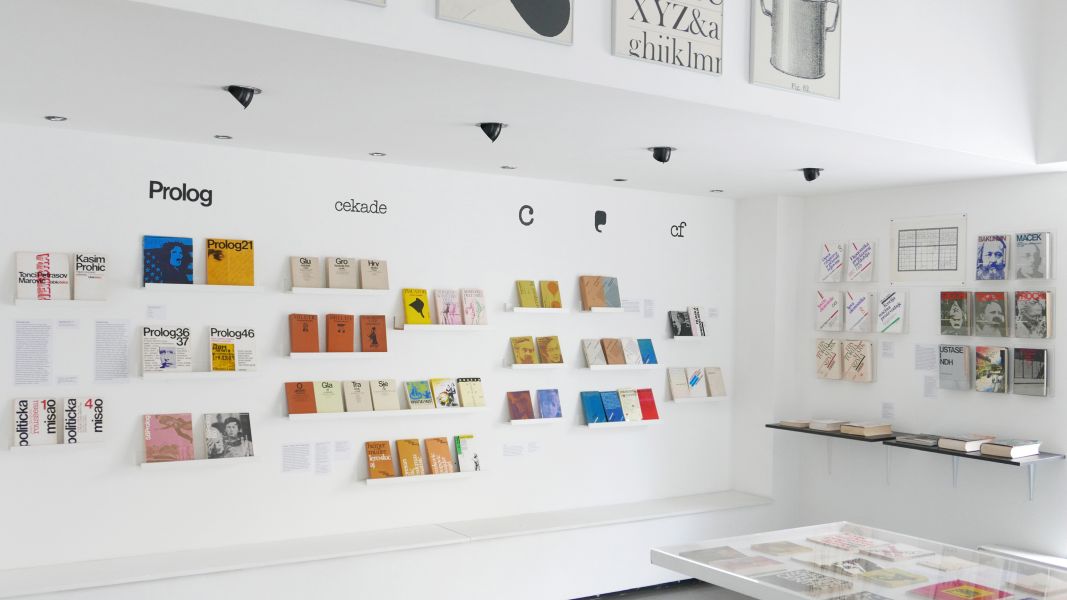Reclusive Designers — Redefining Success in the Internet Era

When it comes to designing fonts for Bengali, the official language of Bangladesh and the second most widely spoken language of India (260 million speakers all told), many would say that Jyotish Sonowal is the best. Satya Rajpurohit of the Indian Type Foundry, where Sonowal worked for four years, calls him ‘extremely talented’. His former colleague Shiva Nallaperumal says that Tulika, Sonowal’s very first typeface, is ‘probably the best Bengali typeface ever designed’. Sonowal has achieved what many only dream of, and he is regularly contacted by people and companies who want him to design new Bengali fonts, but he has lost interest in type design and declines invitations to type design events, choosing instead to explore other fields of design. Nallaperumal recalls him as a very reserved person, and even though they both live in Mumbai, they never see each other.
Gustavo Ferreira studied design first in his native Brazil, then in Germany, and got his MA in type design in the Netherlands. He gave talks at international symposiums and published highly innovative typefaces such as his parametric bitmap system Elementar before returning to Brazil and settling in a small, remote city. Ferreira still works with type design and programming, but has stopped attending design conferences and deleted his Twitter and Facebook accounts. He declined to discuss his reasons for this, except to say that it was a process of rebirth in which he learnt to follow his heart.
Carol Twombly and Robert Slimbach were among the first digital type designers. They were hired by Adobe, and they went on to design its popular Adobe Originals collection. In 1994 Twombly, the designer of Trajan, Charlemagne, Lithos and Adobe Caslon, received the Prix Charles Peignot, a prize awarded by ATypI to ‘a designer under the age of 35 who has made an outstanding contribution to type design’. In 1999 she retired from Adobe and went off to live in the mountains and focus on her fine-art projects. Slimbach, the designer of Adobe Garamond, Adobe Jenson, Minion and Warnock, received the Prix Charles Peignot in 1991, and his acceptance speech for that award was one of the two public talks he has ever given. David Lemon, who was his manager at the time, recalls that he refused many invitations to speak at or attend conferences, saying that ‘he wanted his designs to speak for themselves’. Slimbach is still with Adobe, but works from his home in rural Oregon where he doesn’t have to deal with the distractions of the office environment. He doesn't have a personal website or use any social media platform. ‘It doesn’t help that he is not at all sure the human race is a positive contribution to the universe, and suspects that we won't be around a whole lot longer anyway,’ adds Lemon.
In an age when it seems like everyone and everything is interconnected, many people measure their personal as well as professional success in likes, shares, retweets and followers. The internet and social networks beckon to us with the idealistic promise of establishing unprecedented connectivity and inclusivity. Facebook was launched with what seemed like a laudable mission statement: ‘to give people the power to share and make the world more open and connected’. Against this backdrop, Sonowal, Ferreira, Twombly and Slimbach look like information-age recluses.
Maybe it has something to do with type design itself, which tends to offer more autonomy than other design disciplines. While communication designers are all too familiar with the never-ending cycle of iteration, presentation, user testing, focus group evaluation, customer feedback and further iteration, type designers largely work alone and on their own projects, insulated from the constraints of client briefs, critiques and deadlines. The very nature of type design may attract introverted people, offering a refuge where they can focus more on creating and less on the stress and external interference that are typical for more collaborative fields. Or perhaps type design offers more opportunities for introverts and reclusive designers to stand out and be noticed without having to excel at networking and self-promotion.
Of course, not everybody shies away from social media, and many artists are able to use a variety of platforms to connect with audiences, build a client base and reach a wider public. For Masanao Hirayama, who now has over 70,000 followers on Instagram and a massive online presence, the internet provides a way to give people access to his intimate black and white drawings, although in person he is deeply asocial and not outgoing.
For creative professionals just starting their careers, these connections can be a useful way to open the door to an international audience. The other side of the coin, however, is that they also open the door to international criticism and competition, and managing an online presence can be like a full-time job in and of itself, the PR work that has to be done on top of the design work. A young designer in New York, who wished to remain unnamed, found the pressure relentless. ‘I would spend 14 hours in front of the computer, working on tight deadlines, but instead of going home to relax, I was expected to go to all the events in the city, show my face, to network in hope for the next project.’ Eventually, she closed down her company and joined a big agency, where she could devote her energy to the design work rather than the administrative and marketing chores that go with it.
For many people the fundamental issue is: to what extent is public recognition a measure of success? This is a complex question, and the answer will not be the same for everyone. On the one hand, not everyone has the same appetite for fame, and there are many designers who have never entered their work to be considered for any prize. Identifying competitions, preparing and submitting portfolios, and following results all takes a significant amount of time, research, resources and dedication. On the other hand, the resulting publicity can certainly make it easier to attract funding, secure interesting commissions and ultimately share a vision with an audience.
Does winning an award guarantee some kind of quality? Probably in most cases, yes. But the global reach of the internet reminds us to take words like ‘best’, ‘first’ and ‘most’ with a grain of salt. It’s easy to see the word ‘best’ and understand it to mean ‘best in the world’, when it would be more precise to say ‘best of the submissions to this contest’. And because design is a subjective endeavour, it is even more precise to say ‘the best of the submissions to this contest as decided by these judges’. Nevertheless, design competitions are useful for presenting designs and designers, not just to the design community but also to the broader public, increasing awareness of both new and established voices.
Not all designers would agree, however. Mihajlo Arsovski is undoubtedly one of the most important figures of Croatian graphic design. His work, which includes posters, invitations, interiors, theatre sets and costumes, is in the permanent collection of MoMA in New York, and has acquired an almost mythical status in his home country. In spite of the fact that he was a prolific pioneer of total design in Central Europe, developing a highly personal, eclectic visual style that presaged many trends that were still yet to come, very little has been written about him, perhaps largely due to his persistent refusal to give interviews.
When the Croatian Designers’ Society organised a retrospective exhibition of Arsovski’s work in 2008, his response was that he neither wanted it nor had any interest in it. Nor did he care about receiving the society’s Lifetime Achievement Award. His work is currently the subject of another major retrospective in Zagreb, another show that he refused to attend.

Exhibition of Mihajlo Arsovski’s book and periodical design at the HDD Zagreb, 2019
Perhaps Arsovski represents the extreme end of the spectrum, but in preparation for this article I spoke to dozens of designers who are good at what they do and are passionate about their work, but feel reluctant to follow the traditional path to a traditional notion of ‘success’: submitting pieces to competitions, sending press releases to magazines, proposing sessions for conferences, maintaining blogs… They’ve grown disillusioned with the use of social media and are not comfortable plying networking events, handing out their business cards in hope of making some work connections. ‘I’ve seen how the sausage is made,’ says Christopher Simmons, an internationally recognised designer, and a frequent judge and lecturer on design issues. ‘After judging almost all of the major awards shows, speaking at most of the major conferences, writing books, teaching, winning (and losing) design competitions, gaining cult followings for side projects, being interviewed on major design podcasts, in the NY Times, on the CBS evening news, etc., etc., blah, blah, it's all added up to pretty much nothing outside the tiny bubble of design. You feel special and important when you’re getting all that attention, but for what? At the end of the day it’s all just self aggrandisement. Today’s society is obsessively self absorbed. The more I participate in that, the more I feel like I’m destroying rather than creating culture, and that’s not what I got into design to do,’ he elaborated. ‘Now I do none of that and work alone in an all-black room.’
Instead of striving to carve out their share of the public’s attention, the people I’ve spoken to seem to be more interested in completely redefining the meaning of success. Instead of measuring their careers in terms of awards won, exhibitions launched, clients contracted, employees hired and dollars stowed away, they choose to focus on personal development. Instead of building online social networks, they deepen their connections with their families, friends and trusted associates. In the face of this trend, traditional trade publications may need to find alternatives to rewarding the loudest and most persistent individuals and perpetuating the stereotypes of design success, building instead a more accurate reflection of design, the design field and the impact of design. Many designers have decided to take a step back, simplify their lives and remind themselves why they chose to do this in the first place. Whatever your definition of success, it is much better to figure it out early on in your career rather than at the end.
Correction: April 20, 2021
The last public talk by Robert Slimbach was at the ATypI Rome 2002, and not in 1991.
First published in DAMN No.74, in 2019